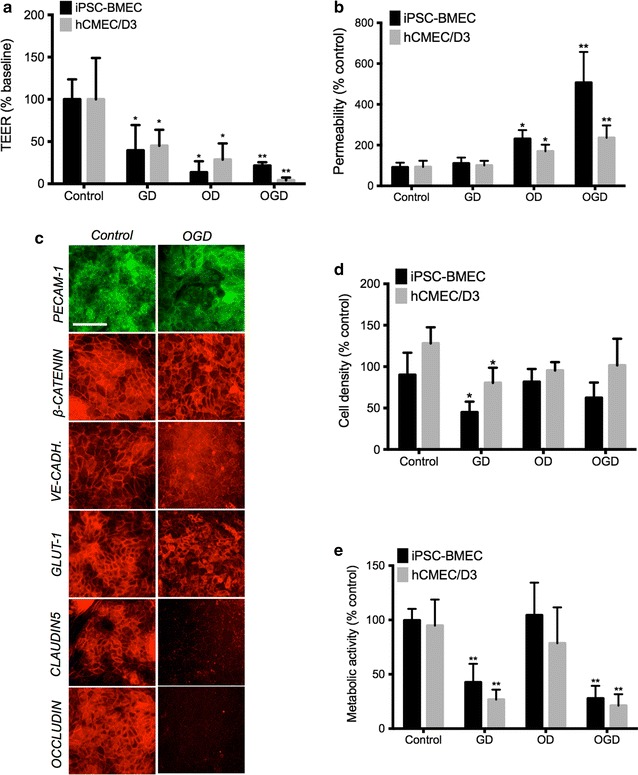Fig. 4.

OGD induced barrier disruption in human BMECs.TEER (a) and sodium fluorescein (b) permeability values in both iPSC-BMECs and hCMEC/D3 cell monolayers following aglycemic (GD), hypoxic (OD) and oxygen-glucose deprivation (OGD) stress. Cells incubated in DMEM with glucose under normoxia served as control. Note the increase in fluorescein permeability following OD and OGD stress. c Representative immunocytochemistry pictures in iPSC-derived BMECs monolayers following 24 h of OGD stress. Note the overall degradation in cell junctions, with a quasi-disappearance in TJ complexes immunoreactivity. Scale bar = 20 µm. d IMR90-derived BMECs and hCMEC/D3 average cell density following treatment with aglycemia, hypoxia or OGD stress. Notably, aglycemia (GD) showed the lowest cell density in both cell monolayers. e Cell metabolic activity following 24 h of treatment. After 24 h of treatment, MTS reagent was added to conditioned cell medium and allowed to further incubate for 1 h. Mean ± SD, n = 3 for each group. * and ** denotes P < 0.05 and P < 0.01 to controls (DMEM with glucose, normoxia) respectively
